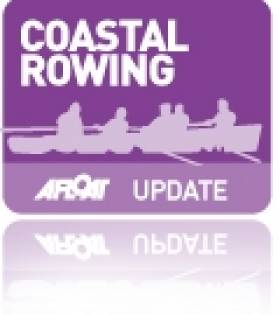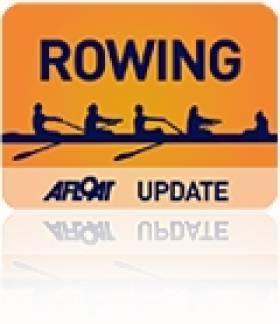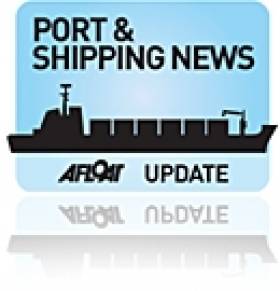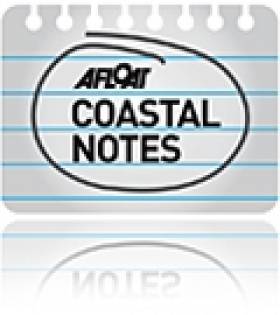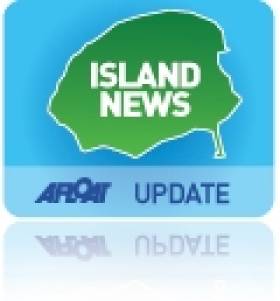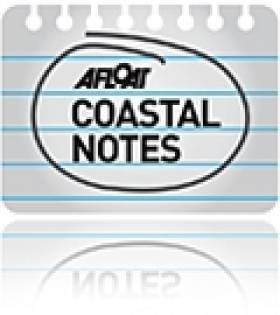Displaying items by tag: Coastal
Clean Coasts’ Big Beach Clean Takes Place This Weekend
Clean Coasts’ Big Beach Clean is taking place this weekend 18th-20th of September all along the Irish coastline. Clean Coasts is teaming up with the International Ocean Conservancy once again for the International Coastal Cleanup event. Last year 560,000 volunteer in 91 countries removed 7,257 tonnes of marine litter from the world's oceans. This year thousands of volunteers will be participating in beach cleans nationwide and you can search for a clean up near you on our website www.cleancoast.org
Michael John O Mahony Director of An Taisce’s Environmental Education Unit said, “Each year millions of tonnes of litter enter our seas and oceans, resulting in environmental, economic, health and aesthetic challenges. The Clean Coasts programme is inviting volunteers to join this global coastal clean-up helping remove marine litter from our beautiful coastline and aid in the protection of our coastal habitats and marine life”.
During the Big Beach Clean, Clean Coasts’ volunteers are asked to carry out marine litter surveys to quantify the amount and types of litter on Irish beaches. These surveys are aimed at heightening awareness about the issue of marine litter and serve as an indicator of the magnitude of the problem.
Currachs to Race in the Heart of the Capital Tomorrow
#COASTAL ROWING: The third annual Dublin Currach Regatta will take place on Saturday, the 4th of July, between the iconic bridges and in the heart of the city on the river Liffey.
Sponsored by Dublin Port Company and Dublin City Council, this is the third year that the east coast has the privilege of hosting a currach regatta included in the national currach racing league. This year the annual Dublin currach regatta will take place for the first time ever on the river Liffey in the heart of Dublin city centre.
Following many years of forging contacts between east coast currach rowers and teams on the west coast of Ireland, this is the first year that the western teams will come to Dublin to compete in a championship fixture.
Currach racing teams from Donegal, Kerry, West Clare, The Aran Islands, Connemara and Galway will attend. Both women’s and men’s crews will be competing as well as the traditional mixed crew race, Fear agus Ban. The races will feature qualifying heats following on to senior men’s and women’s finals as well as mixed crew racing.
All races will take place between 11:00 a.m. and 16:30 and the heats and competition can be viewed all along the Liffey quays right up to the Jeanie Johnston for the duration of the regatta.
'Excellent' Result for Clare Bathing Areas in EPA report
#clarebeaches – A newly published report by the EPA on Bathing Water Quality around Ireland has found that County Clare's 11 designated bathing areas were adjudged to have "Excellent Water Quality" during 2014.
The marine environment news has been described as "hugely significant and positive news" by Clare County Council in light of the newly introduced EU standards for bathing areas, deemed by the EPA to be almost twice as strict as those applied in previous years.
Bathing waters were classified into four categories, namely 'Poor', 'Sufficient', 'Good' and the newly introduced 'Excellent' category. The classification system is based on the levels of E. Coli and intestinal enterococci detected in the bathing water during the 2014 bathing season.
Clare is one of five Local Authority areas to receive "Excellent" classifications for each of its bathing areas, the others being Dun Laoghaire Rathdown, Kerry, Leitrim and Louth.
Clare's 11 bathing areas are Ballyalla Lake (Ennis), White Strand (Milltown Malbay), Ballycuggeran (Lough Derg), Cappa Pier (Kilrush), Bishopsquarter, White Strand (Doonbeg), Kilkee, Spanish Point, Lahinch, Fanore and Mountshannon (Lough Derg).
"This is a magnificent achievement for County Clare and those who work throughout the year to safeguard our bathing areas from environmental pollution and to ensure that the public can enjoy these locations in the knowledge that they are bathing in clean waters," stated Councillor John Crowe, Cathaoirleach of Clare County Council.
He added: "This clean sweep for Clare is something that all tourism interests in the County should be aware of as we must now promote our quality beaches and other bathing locations, particularly in light of the growing numbers of visitors arriving in Clare during their journey along the Wild Atlantic Way."
"I wish to pay tribute to the Environment Section of Clare County Council and those living and working in the vicinity of Clare's 11 bathing locations for their due diligence and hard work in delivering this result. It's one that benefits our County's reputation and of course, the environment," said Councillor Crowe.
"The Council is delighted that each of the 11 designated bathing areas that it monitors achieved 'Excellent' status. This achievement is notable in light of the considerable disruption caused to many locations during the storms of early 2014, as well as the newly introduced standards for assessing bathing areas which are almost twice as strict as those previously applied. Our goal now is to maintain these high standards throughout 2015," explained Paul Moroney Senior Engineer, Clare County Council:
Commenting on the bathing water quality results, Dr Matthew Crowe, Director of the EPA's Office of Environmental Assessment, said: "Overall, the quality of Ireland's bathing waters continues to be very good and new standards introduced in 2014 provide a much higher level of protection for bathers."
"Disappointingly, seven identified bathing waters have been assessed as being of poor quality. The relevant local authorities and Irish Water have put management plans in place to tackle the main pollution risks at these beaches. The test will be whether or not we see the necessary improvements in water quality at these beaches," added Dr. Crowe.
The summary report 'Bathing Water Quality in Ireland – A Report for the Year 2014' is available to download from www.epa.ie.
Boyne Coastal Race Invites Entries
#ROWING: Coastal rowers are invited to take part in the 2015 Boyne Boat Race, over the 14 kilometre coastal, estuary and river course from Clogherhead beach to Drogheda Port on Sunday, June 21st. The Boyne Boat Race 2014 was a great success, with clubs coming from Donegal, Wexford, Wicklow and Dublin. All sorts of vessels participated, including All-Ireland craft, Pembrokeshire longboats, Slaney cots, Skiffs and Currachs to race alongside the host club’s hybrid Skiff/Australian surf boat, Bean Threasa. Craig Wolfe, the over-60s open water single scull world champion, came from Boston to row in the event. The race starts at Clogherhead beach at noon and the course runs out along the coast through the mouth of the River Boyne and winds its way up to Drogheda Port. The race time is approximately 90 minutes to two hours. The race is being held as part of Drogheda’s Maritime Festival, which runs from the 19th to 21st June.
The Minister for Agriculture, Food and the Marine, Simon Coveney TD, today announced the full details of a €17.8m Capital Investment Package for the ongoing development of Ireland's publicly owned fishery harbours and local harbour network .
In announcing the initiative the Minister said "I am delighted to announce the full details of my Departments €17.8m Fishery Harbour and Coastal Infrastructure Capital Programme for 2015. I have set aside €14.9m towards safety, maintenance and new development works at the six Fishery Harbour Centres at Howth, Dunmore East, Castletownbere, Dingle, Rossaveel and Killybegs, in addition to the completion of infrastructural improvement and storm damage repair works at North Harbour, Cape Clear which is also owned by my Department."
Flagship projects in the 2015 Capital Programme (see table1) include major dredging works at Dunmore East, the provision of small craft harbours and pontoons in Howth, Rossaveal and Killybegs, electrical upgrading in Castletownbere, and necessary remedial works to the main pier in Dingle. In addition, the Bull Nose Development and the Duffy's Pier storm damage repair projects at North Harbour Cape Clear are to be completed.
The Minister went on to say "I have also allocated €1.5m for a Local Authority Harbour Development and Marine Leisure programme in 2015, and as an exceptional measure I am also providing in the region of €1.4m to facilitate the completion of a number of Local Authority Storm Damage projects which were approved in 2014 as part of the Governments response to the extreme weather conditions in late 2013 and early 2014, but not completed by the Local Authorities in 2014 due to time constraints and other issues. My Department will be contacting the Local authorities regarding these schemes shortly."
The Minister concluded by saying "This is a significant level of investment in Ireland's publicly owned fisheries and local harbour network. It will continue the implementation of the Governments strategy to develop and improve the facilities at our Fishery Harbour Centres and other public harbours around our coast, benefitting a broad cohort of stakeholders including the fishing industry, seafood processing sector, other ancillary marine industries, marine tourism and leisure and the wider rural coastal communities".
Table 1- Fishery Harbour & Coastal Infrastructure Development Programme 2015
|
Location |
Project |
Department Approved Funding |
|
|
Cape Clear, Co. Cork. |
Bull Nose Development |
€900,000 |
|
|
Duffy’s Pier |
€900,000 |
||
|
Safety & Maintenance Works |
€50,000 |
||
|
Disability Access Works |
€10,000 |
||
|
Piers, Lights & Beacons |
€136,000 |
||
|
All Fishery Harbour Centres |
Safety and Maintenance |
€1,440,000 |
|
|
Howth FHC |
Traffic Management Works |
€75,000 |
|
|
Provision of Small Craft Pontoon |
€1,000,000 |
||
|
Site investigation for West Pier pontoon and Middle Pier upgrade |
€150,000 |
||
|
Upgrading Electrical System – Phase 3 |
€150,000 |
||
|
Castletownbere FHC |
Power points & Electrical Upgrade |
€350,000 |
|
|
Sanitary Facilities Works |
€90,000 |
||
|
Harbour Slipway – Phase 1 |
€400,000 |
||
|
Replacement of Water Network – Dinish Island- design |
€20,000 |
||
|
Proposed Development South Side – Dinish Island- site investigation |
€30,000 |
||
|
An Daingean FHC |
Navigation Buoys Replacement |
€130,000 |
|
|
Main Pier sheet pile Remedial Works |
€200,000 |
||
|
Harbour Workshop and Marina Users Facilities Building - Design |
€40,000 |
||
|
Upgrade Harbour Entrance |
€150,000 |
||
|
Rossaveel FHC |
Phase 2 Small Craft Harbour |
€700,000 |
|
|
Construction of New Slipway – Design Phase |
€70,000 |
||
|
Dunmore East FHC |
Harbour Office Upgrade – Phase 2 |
€200,000 |
|
|
Breakwater design |
€150,000 |
||
|
Traffic Management Plan |
€15,000 |
||
|
Dredging Works |
€6,500,000 |
||
|
Killybegs FHC |
Improvement works to Shipyard Entrances |
€40,000 |
|
|
Small Craft Harbour – Phase 2 |
€700,000 |
||
|
Provision of additional bollards |
€60,000 |
||
|
Smooth Point Pier Extension – studies and preparation: |
€175,000 |
||
|
Power Outlets - Boatyard |
€40,000 |
||
|
Local Authority |
Local Authority Harbour Development and Marine Leisure |
€1,500,000 |
|
|
Local Authority Storm Damage |
€1,400,000 |
||
Ireland's Maritime Strategy 'A Model To Follow' For Malta
#Maritime - Is Ireland a model to follow when it comes to maritime strategy?
It is according to Simon Mercieca of the University of Malta, who blogs on the Malta Independent website about the need for his country to take lessons from the Irish experience.
Citing his visit to a maritime history conference at University College Cork late last year, Dr Mercieca is full of praise for Marine Minister Simon Coveney and his department's focus on revitalising Ireland's ports and coastal areas.
That stands in stark contrast to the situation on Malta as Dr Mercieca would have it, describing a country where maritime "is today a non-entity in our political discussion".
"Despite the fact that Malta built its fortune on its geographical position in the middle of the Mediterranean Sea, the country now lacks a serious maritime vision."
The Malta Independent has more on the story HERE.
#Maritime - Ireland has been "sea-blind" for decades and needs a "strong maritime constituency" to make the most of our significant ocean and coastal resources, according to the nation's highest ranking naval officer.
Rear Admiral Mark Mellett DSM was speaking at the launch of a new book celebrating 25 years of RTÉ Radio's Seascapes programme at the National Maritime Museum in Dun Laoghaire last Monday 1 December.
Citing Ireland's mostly maritime jurisdiction - "three times the size of Germany, one million square kilometres, 92% of which is underwater... with trillions of euros of yet-to-be-found hydrocarbon and mineral resources" - he lamented that the nation had taken so long to embrace the sea.
"Over many decades, in my own view, in particular since the foundation of the State, we've been sea-blind. We haven't recognised our maritime heritage to the level that we should," said the Deputy Chief of Staff of the Defence Forces.
"And that's why it's important that institutions like the Maritime Museum of Ireland have stood us in good stead by re-establishing our constituency, and more recently I'm delighted that Government from the centre, through Harnessing Our Ocean Wealth, is driving that maritime constituency."
In particular, Admiral Mellett hailed "initiatives like the Irish Maritime and Energy Resource Cluster... [that] aim to establish at least 3,000 jobs in the maritime sector" in the coming years.
"But good governance needs a strong maritime constituency," he added. "And it needs champions... But more than that, it needs thought leaders, thought leaders like Tom MacSweeney, thought leaders like Lorna Siggins [Irish Times Marine Corr – Ed] and thought leaders like Marcus Connaughton, people who define and set the agenda in the maritime."
WM Nixon has much more on the Sailing By book launch in his latest blog entry HERE.
Listing Ireland's 'Best-Loved Seaside Spots'
#Seaside - Ireland might not boast the beautiful Victorian-era piers that make Britain's seaside resort towns such an attraction.
But as Tanya Sweeney writes in the Irish Independent, we've got our own coastal getaways that have maintained their appeal across the generations.
Sweeney's top 10 list begins in Tramore, the "perennially popular weekend destination" in Co Waterford where visitors can split their time between the Blue Flag beach and the old-school amusements.
Near the capital, Brittas Bay in Co Wicklow to the south and Skerries and Balbriggan to the north make the grade for the quality of their beaches and proximity to other sites of interest – the former found slap bang in the middle of the Garden of Ireland, while the latter are a short distance from Ardgillan Castle and the restored Skerries Mills.
Independent.ie has much more on the story HERE.
Second Edition For Book Chronicling Ireland's Coastal Islands
#Islands - Sea kayaking enthusiast David Walsh has published a second edition of Oileáin, his popular pictorial guide to Ireland's coastal islands, as TheJournal.ie reports.
Now featuring some 574 islands - 503 of which the author has personally landed upon - the book's selection runs from the easily accessible, such as Ireland's Eye off Howth, to the rugged and remote, like the infamous Fastnet Rock south of the Cork coast.
While Walsh provides practical advice for how readers can themselves lands on even the most challenging of these islands, the book has equal appeal to anyone curious about the many islands, big and small, that stud the Irish coastline.
TheJournal.ie has more on the story HERE.
€16.8M Storm Fund Allocated to Clare County Council
#stormfund – Clare County Council last night (Thursday, 27 February 2014) received confirmation from the Department of the Environment, Community and Local Government of its decision to provide €16,205,637 to undertake repair works to local authority managed infrastructure damaged during the recent period of severe weather.
The funding has been allocated in response to submissions made to Government by Clare County Council outlining details of the structural damage caused to infrastructure along Clare's Atlantic coastline and at some locations along the Shannon Estuary.
The funding has been earmarked for a programme of repair works to roads, piers and harbours, coastal protection repairs, tourism infrastructure and other facilities which are in the charge of Clare County Council.
Meanwhile, the Department of the Environment, Community and Local Government has also made a once-off allocation of €608,878 to the local authority to recoup the costs associated with its response to storms during January.
Welcoming the news, Mayor of Clare Cllr. Joe Arkins said: "This is a very positive announcement for Clare and the people who live and work in the areas affected by the recent storms. I am delighted that Government has responded to the Council's detailed submissions with such a substantial funding allocation, which will help to alleviate the fears of many people who have expressed concern over what effect the storm damage would have on their communities and tourism infrastructure."
"Clare is a tourism county and is a key part of the Government tourism flagship project, the Wild Atlantic Way, and it is vitally important that our tourism product is accessible and usable. This allocation enables the Council to immediately prepare and submit a programme of works," added Mayor Arkins.
Clare County Manager Tom Coughlan has also warmly welcomed the announcement, adding: "Clare County Council is cogently aware of the importance of undertaking repair works to damaged infrastructure and has already invested a considerable amount of its own resources in undertaking interim remedial works to ensure that the impact of the storm damage on local communities has been minimised."
He continued: "In light of this extremely positive announcement, the Council will now begin a process of engagement with the relevant funding Departments and Agencies with a view to proceeding with vitally important infrastructure repair works along Clare coastline. We would hope that further funding allocations will be made but the level of this allocation enables very significant works to be progressed. Due to the extensive disruption to community life along the Clare coastline and in light of the upcoming summer tourist season, the local authority is committed to progressing the planning and delivery of repair works as quickly as possible."
The combined funding of €16,814,515 is in addition to the €6m already allocated by Government for the construction of a new harbour development, including a pier and flood defence works, at Doolin.




























